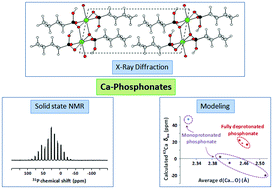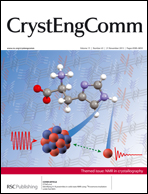Structural study of calcium phosphonates: a combined synchrotron powder diffraction, solid-state NMR and first-principle calculations approach†
Abstract
The structures of four Ca-phosphonate phases are reported here: Ca(C6H5–PO3H)2 (1), Ca(C6H5–PO3)·2H2O (2), Ca(C4H9–PO3H)2 (3) and Ca(C4H9–PO3)·H2O (4). Structural models were obtained ab initio by using a combined synchrotron powder diffraction, solid-state nuclear magnetic resonance, and gauge including projector augmented wave (GIPAW) calculation approach. The 1H, 13C, 31P and 43Ca

- This article is part of the themed collection: NMR crystallography

 Please wait while we load your content...
Please wait while we load your content...